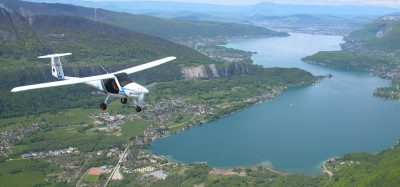What is the seamless airport? Interview with Paul Hickox, Rockwell Collins.
Posted: 23 August 2017 | Paul Hickox | No comments yet
In 2007, IATA released the Fast Travel initiative, a six point programme giving the passenger more control over his or her journey, which encompasses: self check-in, bags ready-to-go, document check, self boarding, flight rebooking and bag recovery.


All these elements are supporting IATA’s vision for a seamless curb-to-airside experience and IATA is hoping for 80% of passengers to have access to all six elements by 2020.
As a result, ‘seamless travel’ is the phrase everyone wants to use; a scenario where passengers can book a single door-to-door service, where they check-in at home, arrive at the airport at leisure, attach a pre-printed bag tag and drop off their bags at an automated point before a painless transition through security with minimal hassle and maximum efficiency. Once airside, they are free to enjoy retail offerings and lounge access at their leisure whilst confident of being updated on their flight via Wi-Fi and push notifications before boarding their plane in an unrushed manner.
It’s fair to say we are not quite there yet, but the utopian vision is closer than ever before. Seamless travel is dependent on two important areas – infrastructure and technology. Infrastructure provides the modalities within the airport and technology connects them. Globally, airports and airlines are working with Rockwell Collins to move them towards the streamlined, connected airport and seamless travel. We have asked Paul Hickox, Rockwell Collins’ head of Airport Global Sales and Account Management, to discuss the following questions:
Free webinar – The future of asset management in global aviation
15 January, 2026, 02:00PM GMT
Join this virtual panel to hear from some of the AtkinsRéalis and aviation sector experts as we discuss how asset management is changing and the impact it will have on the future operations of airports throughout the world.
- Is the seamless airport an achievable, realistic goal?
- What can the passenger expect to see from a ‘seamless passenger experience’?
- Would it be fair to say a true seamless airport is not possible without an investment in both the infrastructure AND the technology connecting it?
- With a legacy airport infrastructure, how close to the seamless ideal can we get?
- With more talk about data being handled, transmitted, analysed and relied upon by airports, airlines, ground handlers and passengers – does this mean most of the investment would be in data centres, servers and IT infrastructure?
- With more and more systems collecting more and more data with every passenger movement through an airport, how can airlines, airports and ground handlers take advantage of this vast amount of data?
- Once we start sharing data, what efficiencies become available? How do these efficiencies help airports, airlines, ground handlers, passengers and the environment? Will we start to see a seamless passenger experience?
Read the full interview at Rockwell Collins’ ARINC Airports Discussion Forum: http://www.airportknowledge.com/talking-airports/discussions
Join our free webinar: Revolutionising India’s travel experience through the Digi Yatra biometric programme.
Air travel is booming, and airports worldwide need to move passengers faster and more efficiently. Join the Digi Yatra Foundation and IDEMIA to discover how this groundbreaking initiative has already enabled over 60 million seamless domestic journeys using biometric identity management.
Date: 16 Dec | Time: 09:00 GMT
rEGISTER NOW TO SECURE YOUR SPOT
Can’t attend live? No worries – register to receive the recording post-event.


















